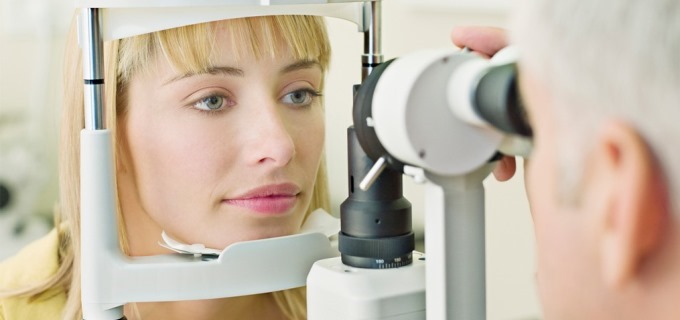Search for a doctor or hospital in your network.


Search for a doctor or hospital in your network.

Get News & Updates Directly To Your Inbox
 People living with diabetes can have eye problems that lead to vision loss or blindness. And diabetic eye disease often has no early symptoms. That’s why an annual eye exam is critical for people with diabetes.
People living with diabetes can have eye problems that lead to vision loss or blindness. And diabetic eye disease often has no early symptoms. That’s why an annual eye exam is critical for people with diabetes.The longer you have diabetes, the greater your chance for diabetic eye disease. Everyone with type 1 or type 2 diabetes is at risk, but the risk is higher for African American and Hispanic people.
Diabetic retinopathy is a common type of diabetic eye disease. High blood sugar causes tiny blood vessels in the eye to grow and leak blood and other fluids onto the retina. The retina is a thin group of cells at the back of the eye. When light hits the retina, it sends signals to the brain to form visual images. Diabetic retinopathy damages the retina, causing vision loss.
Warning signs of the disease may include:
These symptoms can come and go, but even if it seems like they have gone away, the problem can cause ongoing damage.
In early stages, people often don’t experience any symptoms. That’s why it’s so important to have a comprehensive dilated eye exam  every year. Regular eye exams can detect problems early when they can be more successfully treated. Early diagnosis and proper treatment can greatly lower the chance of blindness.
every year. Regular eye exams can detect problems early when they can be more successfully treated. Early diagnosis and proper treatment can greatly lower the chance of blindness.
Diabetes has been linked to other eye diseases,  including:
including:
Take steps to protect your eyes:
 and blood pressure
and blood pressure  levels under control.
levels under control.Check out the Healthy Living section  of the American Diabetes Association (ADA) website to learn more about managing diabetes.
of the American Diabetes Association (ADA) website to learn more about managing diabetes.
And remember, yearly eye exams are the best way to spot problems early when they’re easiest to treat. You may even save your eyesight.
Your primary care provider (PCP) needs a copy of your test results from your eye doctor to keep your diabetes plan of care current.
To make sure you get the best care, we recommend that you ask your eye doctor to share the results of your eye exam with your PCP within two weeks of your eye exam. That way you can discuss the results with your PCP. It also helps make sure you get the right care at the right time.
If your doctor hasn’t talked to you about having an eye exam, make sure to ask about one at your next visit.
 Mayo Clinic, 2023; Diabetic Retinopathy,
Mayo Clinic, 2023; Diabetic Retinopathy,  National Eye Institute, National Institutes of Health, 2024; Get a Dilated Eye Exam,
National Eye Institute, National Institutes of Health, 2024; Get a Dilated Eye Exam,  NEI, 2024; Cataracts,
NEI, 2024; Cataracts,  NEI, 2024; Glaucoma,
NEI, 2024; Glaucoma,  NEI, 2024; Eye Complications,
NEI, 2024; Eye Complications,  American Diabetes Association
American Diabetes AssociationBlue Cross and Blue Shield of Oklahoma, a Division of Health Care Service Corporation,
a Mutual Legal Reserve Company, an Independent Licensee of the Blue Cross and Blue Shield Association
© Copyright 2025 Health Care Service Corporation. All Rights Reserved.
Verint is an operating division of Verint Americas, Inc., an independent company that provides and hosts an online community platform for blogging and access to social media for Blue Cross and Blue Shield of Oklahoma.
![]() File is in portable document format (PDF). To view this file, you may need to install a PDF reader program. Most PDF readers are a free download. One option is Adobe® Reader® which has a built-in screen reader. Other Adobe accessibility tools and information can be downloaded at https://www.adobe.com/trust/accessibility.html.
File is in portable document format (PDF). To view this file, you may need to install a PDF reader program. Most PDF readers are a free download. One option is Adobe® Reader® which has a built-in screen reader. Other Adobe accessibility tools and information can be downloaded at https://www.adobe.com/trust/accessibility.html. ![]()
![]() You are leaving this website/app ("site"). This new site may be offered by a vendor or an independent third party. The site may also contain non-Medicare related information. Some sites may require you to agree to their terms of use and privacy policy.
You are leaving this website/app ("site"). This new site may be offered by a vendor or an independent third party. The site may also contain non-Medicare related information. Some sites may require you to agree to their terms of use and privacy policy.
Powered by Verint